The spirit of Falk still haunts the Headwaters Forest Reserve near Eureka
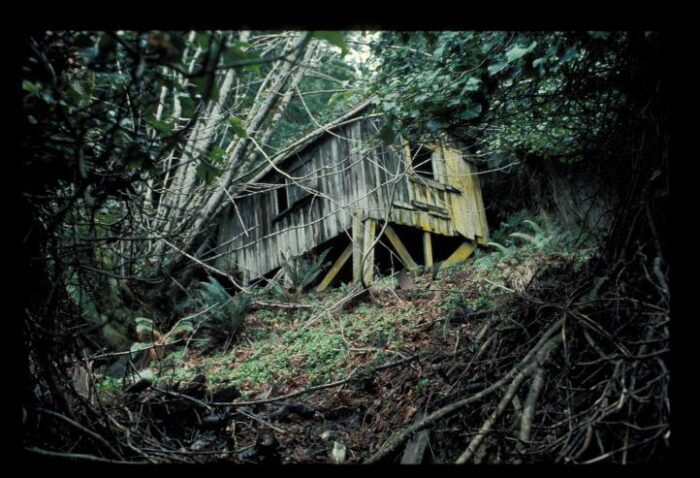
Imagine a quintessential ghost town: Tumbleweeds rolling down a dusty main street, a saloon door creaking in the dry prairie wind.
The Falk ghost town was something else entirely—a damp and eerie outpost shrouded in the mists of Northern California’s remote redwoods. Those who ventured to the site found ramshackle structures shaggy with moss and vines. Saplings sprouted through floorboards and ferns clung to sagging roofs. The entire abandoned logging town was being slowly swallowed by the forest.
Today, the moldering structures are long gone and the Falk site is now part of the BLM’s Headwaters Forest Reserve, six miles outside Eureka, California. But the once-thriving company town of 400 souls hasn’t vanished entirely.
“When I first started working there, I felt a presence,” says Julie Clark, a Bureau of Land Management park ranger who has written a book about Falk. “I like to say that the ghosts of Falk got me my job. They whispered, ‘tell our story.’”
An isolated community in the redwoods
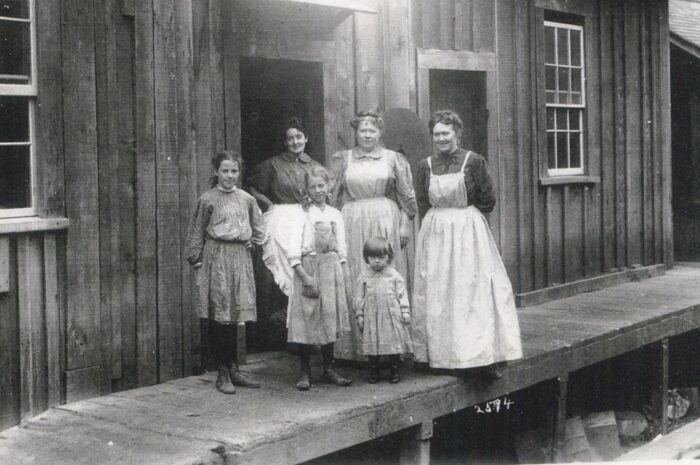
In the 1860s, an enterprising man named Noah Falk established the Elk River Mill and Logging Company in the heart of Humboldt’s redwood country. The Timber and Stone Act of 1878 allowed Falk and his partners to purchase pristine redwood forest for only dollars on the acre. But they needed workers to cut and mill the valuable timber—and a place for this workforce to live.
“There was a small period in American history when we didn’t have automobiles but had extraction in remote areas,” says Clark. “[Timber companies] needed pop-up towns.” In the case of Falk, an entire community was constructed from scratch to support logging operations. The town included living quarters, a cookhouse, post office, general store—even a dance hall.
Some 400 timber workers and their families called Falk home at the town’s heyday. And tree by massive tree, they took down the old-growth redwoods.
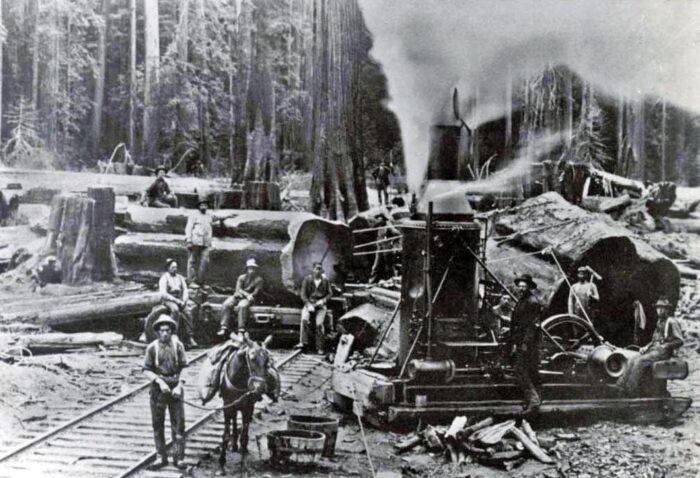
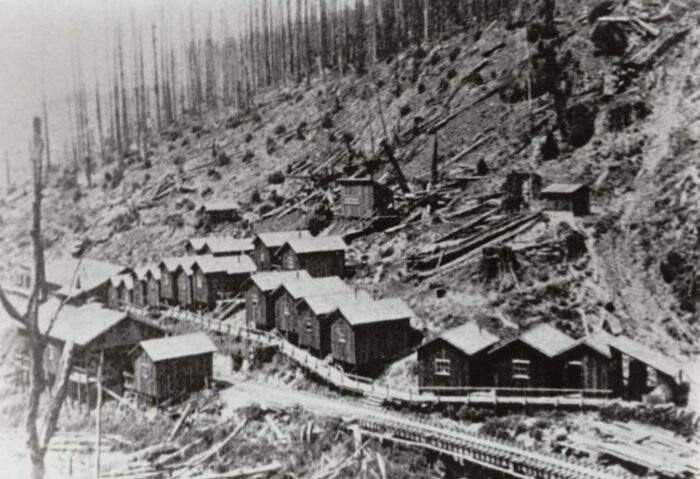
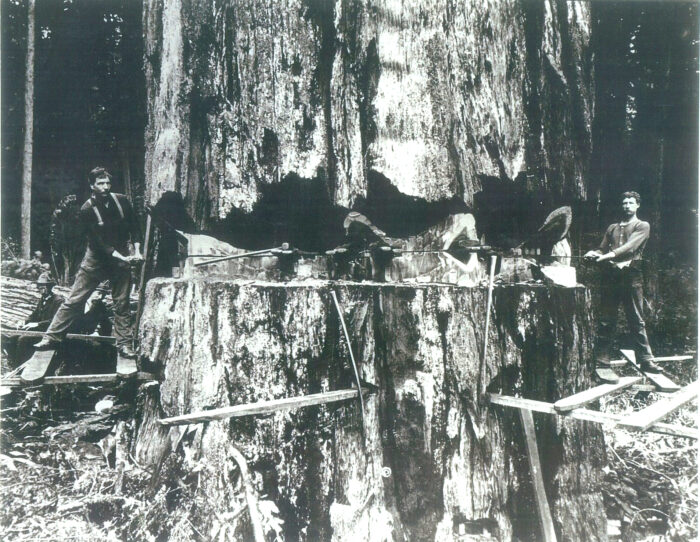
From mill town to ghost town
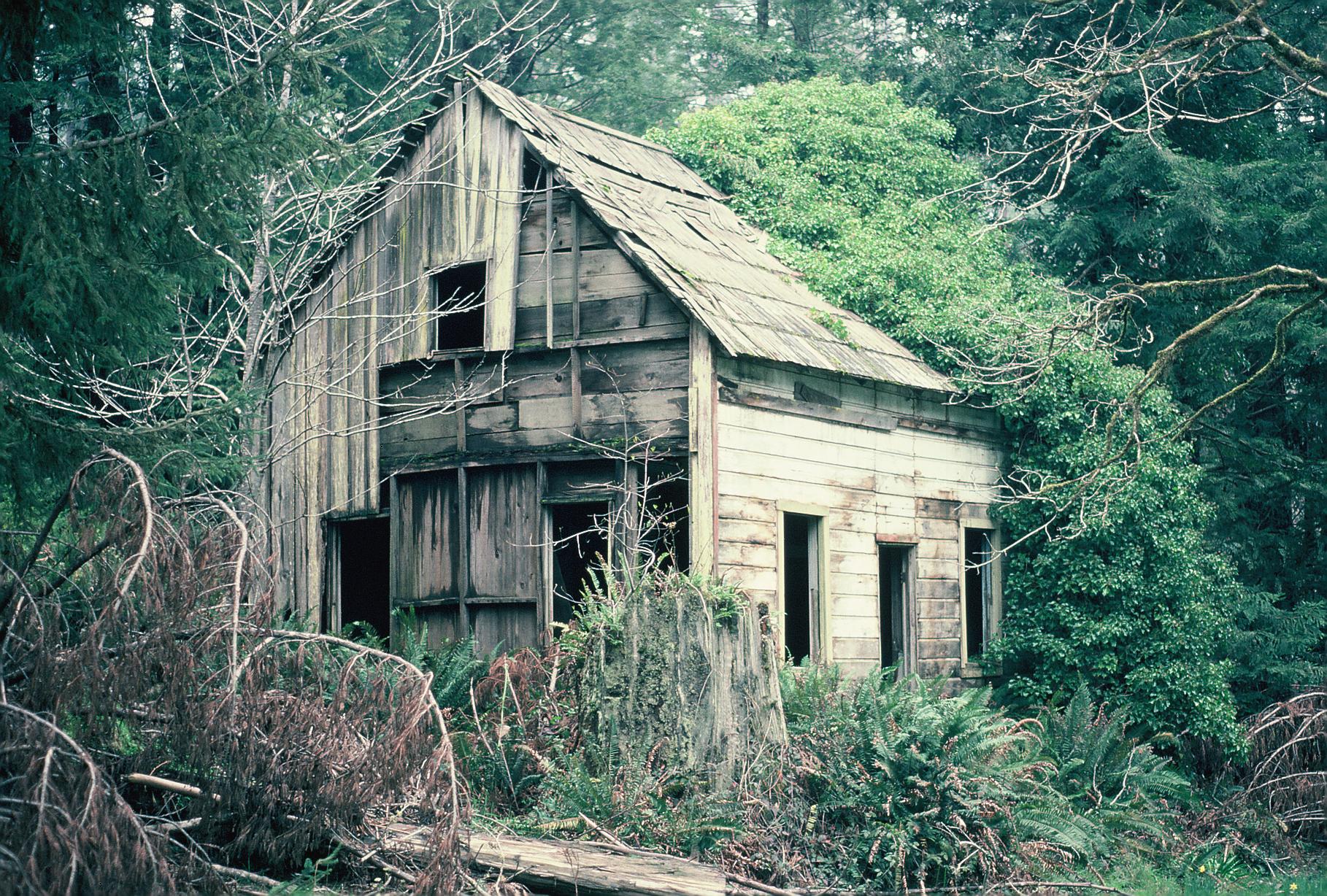
With the rise of the automobile in the 1920s, Falk’s workers began moving from the isolated, insular community to the larger town of Eureka. This exodus was hastened by the Great Depression and a downturn in the redwood timber market. One by one, company mill towns winked out across Northern California.
In 1937, the Falk mill was shuttered. A handful of residents stubbornly held on, but most fled, leaving behind houses filled with personal effects. Eventually Falk became a true ghost town, its ramshackle buildings slowly sinking into the forest floor. The abandoned structures were a liability, and the landowners hired a caretaker to guard the site from treasure seekers and curious teens. “He would chase people with a shotgun full of rock salt,” says Clark.
In 1979, the logging company razed almost all of Falk’s remaining structures, leaving behind only the caretaker’s cottage and an old railroad roundhouse. The bustling town of 400 was gone.
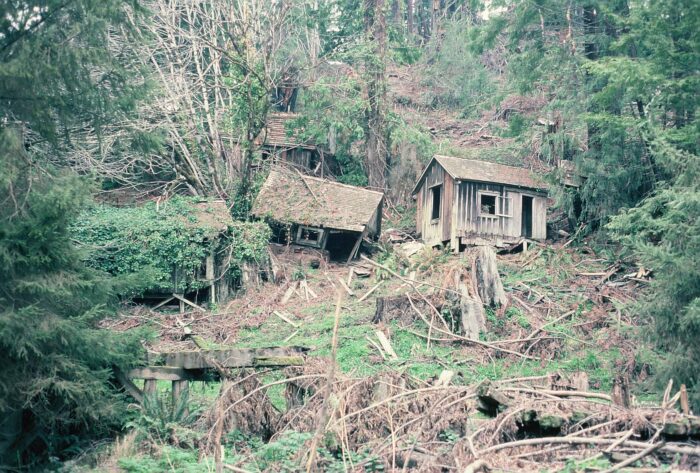
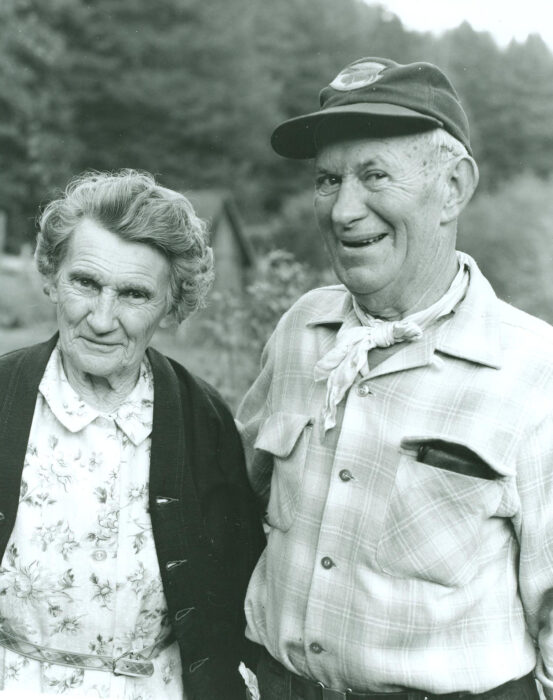
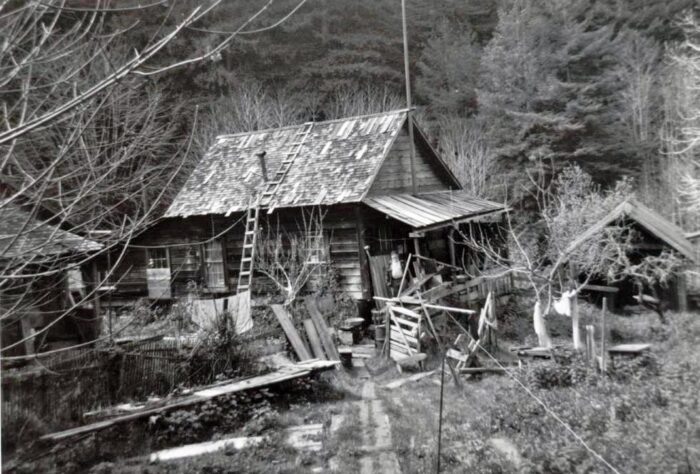
Revenge of the redwoods
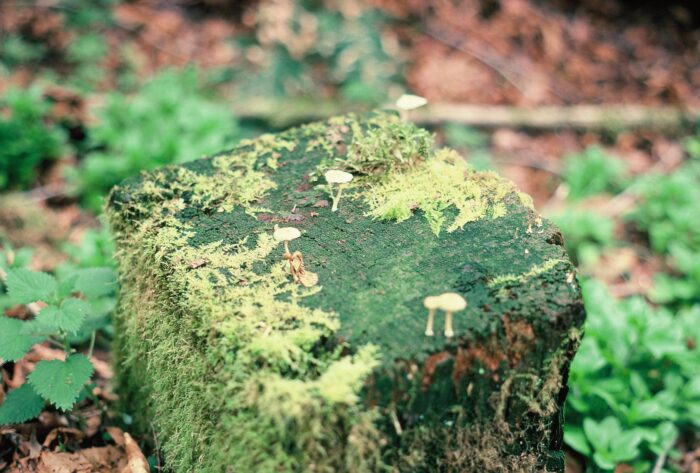
In 1999, the Falk site became part of the new Headwaters Forest Reserve, established to preserve one of the largest unprotected tracts of old-growth redwoods in the country. Inch by inch, the trees began to reclaim the Falk landscape. Yet the former ghost town refused to be forgotten.
“Things would pop up all the time,” says Clark. The tail of an old windmill appeared in the middle of the trail one day. A volunteer found a porcelain doll’s head inside a stump. Old bottles and shards of ornate dishes would show up amidst the foliage.
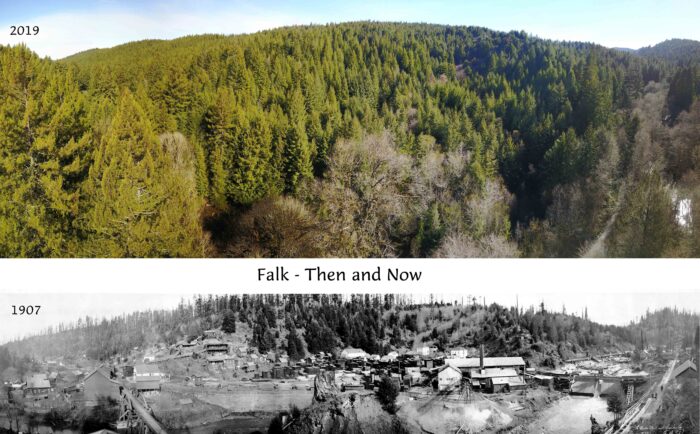

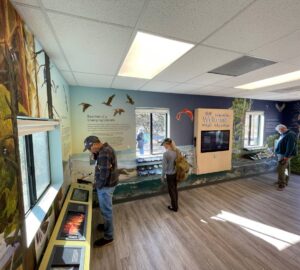
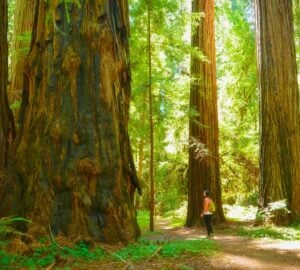
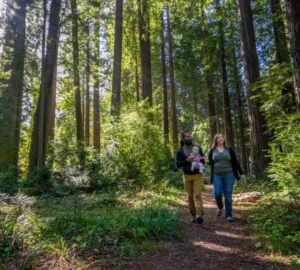
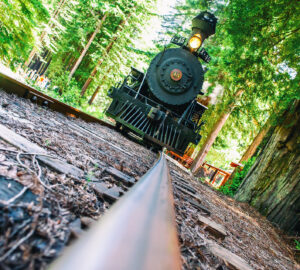
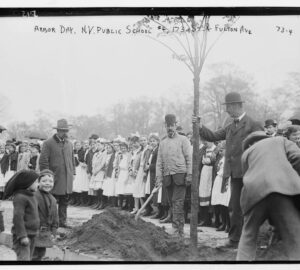

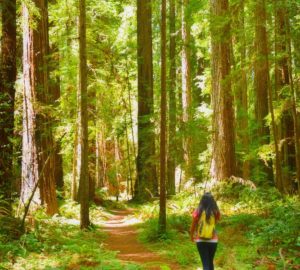
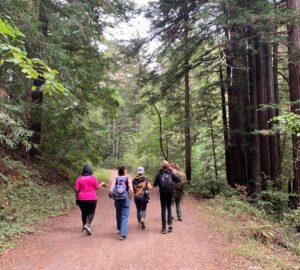

5 Responses to “Spooky redwoods ghost town remains “a presence””
janice dinsmore scott
My paternal family lived in and around Alton CA in the early 1900s and my father worked in the Scotia mill. I was born in Fortuna CA and the family moved to San Francisco when logging was diminishing and railroading was where the jobs were. I always remember these beautiful trees when as a kid we would travel the redwood highway for miles and miles from San Francisco to Eureka with these trees lining both sides of the highway. This story reminds me of that earlier time. Thanks for bringing it to us.
Elena
I come from what was an old logging town. This was fascinating to read, thank you.
Bethany
Thank you for sharing such a beautiful history
LoriRedwoods
Born and raised in upstate NY, maple and apple trees surpassed the needle-bearers like pines. After 17 years of the hardest winters, I left and settled in California and kept following the trees north. The biggest ones are now my neighbors and became respected beings, friends that need to be protected. I’m retired and would like if the powers that be would allow folks like me to end our days on earth by being placed under the shadows of these giants. To me it’s a way of giving back
The Vegan
I hope you get your wish Laurie and that was a beautiful post